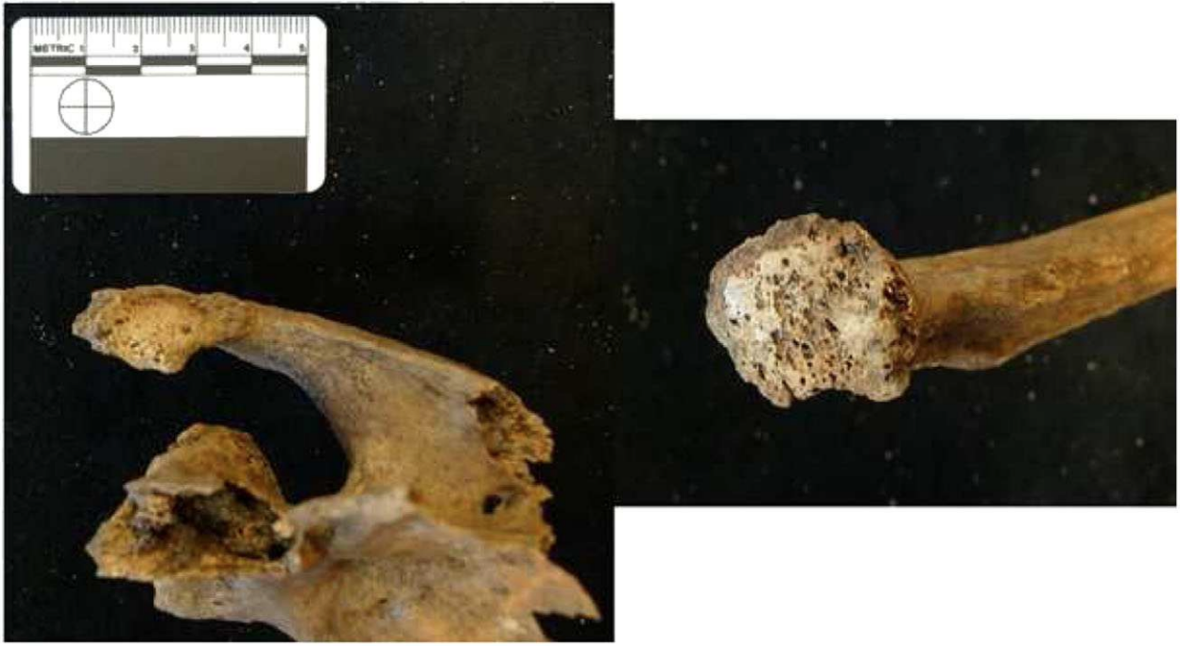Middenbeemster
- Period: Post-Medieval
- Location: Denmark
- Burials: 69 individuals
- Archaeologists: Palmer, J., Hoogland, M., & Waters-Rist, A.
- Related Keyword/Categories: Inhumation, Behavior & Activity, Paleopathology

The goal of the study by Palmer, Hoogland and Waters-Rist (2014) is to examine activity patterns in a post-medieval cemetery in the Netherlands, and assess the effectiveness of using Osteoarthritis (OA) and Entheseal changes (EC) for activity reconstruction. The sample comes from the Dutch cemetery site of Middenbeemster, which was in use from 1613 and 1866 CE. Most individuals were buried between 1829 and 1866, based on archival research, however no information about the lifestyles and occupations of the deceased individuals was found. During this period, the population was fairly small and centered around dairy production. They had not yet been affected by the Industrial Revolution, so the labor was primarily manual. The skeletal sample included two primary age groups: late young adults (26–35 years) and middle adults (36–49 years). Younger individuals were not used because the activity markers may have not had enough time to form completely, and older individuals were excluded because of the accumulative nature of the markers and wear over time. Other skeletons that were excluded include individuals with poor preservation or those who had signs of severe pathology. In total they had 69 individuals in their sample: 19 female and 13 male late young adults, and 20 female and 17 male middle adults. Only markers in the upper limb were examined (humerus, scapula, ulna, radius, clavicle). For assessing OA they examined the elbow joint, shoulder joint, and area where the clavicle and scapula meet. For EC, they looked at muscular attachments on the humerus, radius, and ulna. Scoring was done by determining whether wear of joint surfaces was either absent, mild, moderate or severe, and whether the muscular attachment sites had a robusticity of 1,2 or 3 (absent to robust). They found that OA was symmetrical in 59 of 69 individuals, meaning they worked both the right and left arms equally. There was a higher prevalence of OA in the shoulder than the elbow. The difference between males and females was minimal, and there was no major age group difference, beyond the slight increase in severity with age. EC however was only symmetrical in 32 of 58 individuals, with more people having the left side more pronounced and robust. There was a major difference in EC between late young and middle adults, with older individuals having more robust muscular attachments. When comparing the two markers, they found no direct correlation between severity in OA and robusticity in EC. Based on their analysis, there are a number of questions they explore. First, they found no strong correlation between OA and age, although the only individuals with severe OA were middle adults. They hypothesize therefore that OA may have a strong genetic component, explaining why some hardworking middle adults lacked severe OA. Second, there wasn’t a clear difference in sex for OA, which could mean that both males and females were doing the same kind of labor. However, they argue that female hormones can cause increased susceptibility to OA, so they may have had lighter labor but increased OA due to hormones. Examination of EC shows there is a clear link with age: older individuals have more pronounced muscular attachments since this is accumulative over time. Further, there was a sex difference in EC patterns showing that perhaps males and females worked different types of jobs. The pronounced muscles in males show that they were lifting, whereas females had pronounced muscles associated with pulling, perhaps related to milking and laundry. Finally, overall the population showed similarities in OA and EC that likely means there wasn’t major status differentiation- everyone worked.
References: Palmer, J., Hoogland, M., & Waters-Rist, A. (2014). Activity Reconstruction of Post-Medieval Dutch Rural Villagers from Upper Limb Osteoarthritis and Entheseal Changes International Journal of Osteoarchaeology DOI: 10.1002/oa.2397


